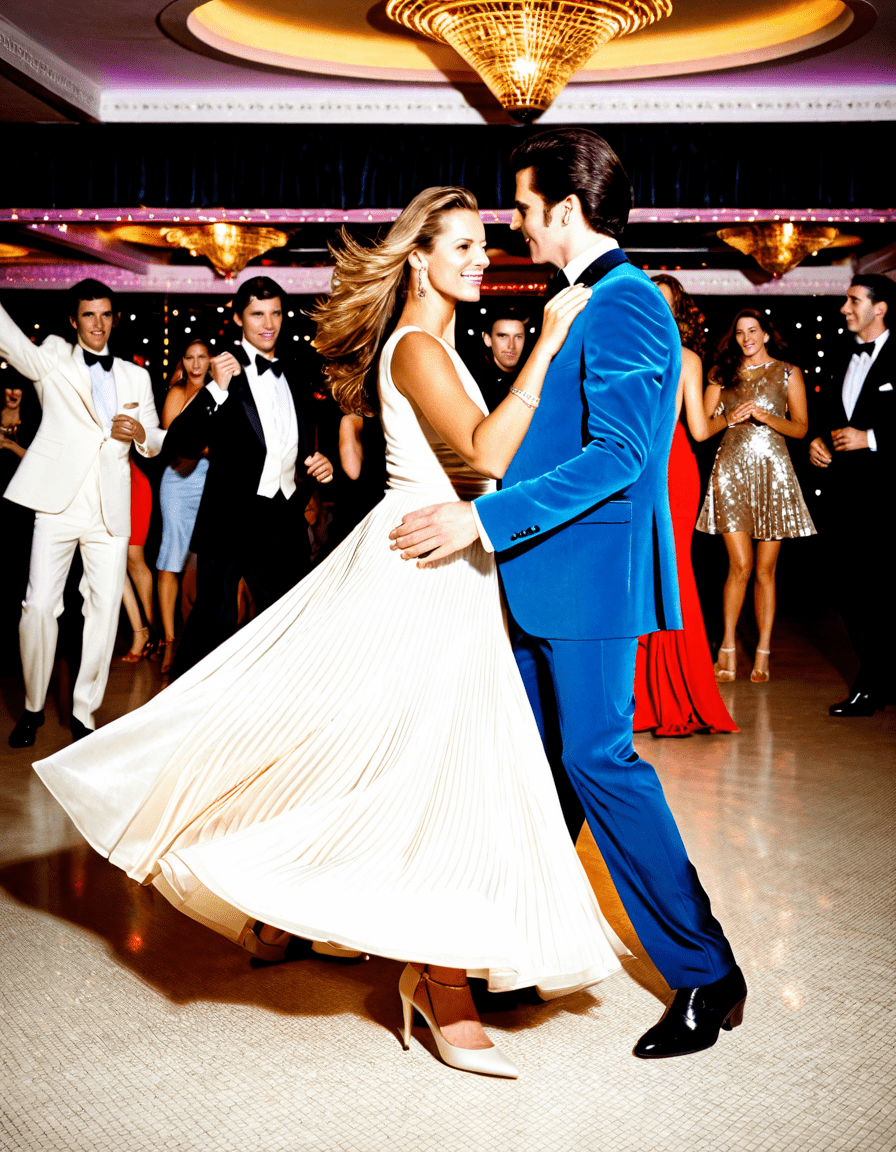When you think of iconic films that left a mark on cinema history, Saturday Night Fever absolutely tops that list. Released in 1977, this movie didn’t just bring disco to our screens; it changed how we viewed dance in film forever. Its influence has rippled through decades, shaping not only cinematic styles but also the culture of dance itself. With its unforgettable soundtrack, groundbreaking choreography, and powerful social commentary, Saturday Night Fever redefined what it meant to dance on screen. Let’s dive into the seven pivotal ways this film revolutionized dance in cinema, making it a timeless classic that continues to inspire.

7 Ways Saturday Night Fever Revolutionized Dance in Cinema
1. Introduction of Disco Culture to Mainstream Cinema
If you mention Saturday Night Fever, images of shimmering disco balls and vibrant nightclubs come to mind. This film thrust disco culture into mainstream visibility. Before its release, disco was often relegated to underground venues and obscure gatherings. Saturday Night Fever showcased the allure of the nightlife, creating a cultural phenomenon.
The vitality and exuberance of the disco scene captured audiences, leading to an explosion of films trying to replicate its success, like Can’t Stop the Music and Fever. Suddenly, everyone wanted to don flared pants and hit the dance floor, proving that cinema can shape cultural trends, not just reflect them.
2. Influence on Choreography and Film Style
Choreographers, especially Deney Terrio, changed the game with innovative dance styles that blended seamlessly with the film’s narrative. The iconic dance moves of John Travolta didn’t just look great; they established new benchmarks in choreography that filmmakers strive to reach even today. The techniques introduced in Saturday Night Fever paved the way for future dance-centric musicals, inspiring television shows like Glee and movie franchises such as Step Up.
With each twist and turn, Saturday Night Fever taught us that dance isn’t just movement; it’s a storytelling form in its own right. And who could forget that legendary dance-off? It’s the kind of scene you replay, not just for the moves but for the emotions tied to those performances.
3. The 1970s Fashion Revolution
Let’s be real: who doesn’t love a good fashion moment? Saturday Night Fever sparked a style revolution that gave birth to vibrant colors, satin shirts, and, of course, platform shoes. Designers like Halston played a significant role in creating the fashion-forward looks featured in the film. The film’s influence went beyond the club and hit the streets, as people everywhere wanted to embrace the disco aesthetic.
Remember those Saturday nights watching Desperate Housewives, where characters sported high-fashion ensembles? You can trace a direct line back to the flamboyance of Saturday Night Fever. Talk about a legacy that lasts!
4. Soundtrack that Defined a Generation
Let’s take a moment to talk about that soundtrack. The Bee Gees’ hits, especially “Stayin’ Alive,” didn’t just soundtrack the film; they became anthems for a generation. Saturday Night Fever redefined what soundtracks could do for a film and how they could be marketed.
The success of the soundtrack helped cement the idea that music is critical in storytelling. Fast forward to modern times, you see this trend carry through with films like A Star Is Born (2018), where songs almost become characters themselves, driving narratives and enhancing emotional depth.
5. Representation of Working-Class Struggles
Underneath all the glitz and glamour, Saturday Night Fever presents a raw look at the socioeconomic struggles faced by its characters. This candid portrayal confronted audiences with the realities of working-class life, laying the groundwork for future films addressing similar themes.
Movies such as The Pursuit of Happyness and series like Breaking Bad show how societal challenges can shape personal journeys. Saturday Night Fever didn’t just dance—it dared us to reflect on the tougher aspects of life, all wrapped up in a shiny, Disco-dusted bow.
6. Cinematic Influence on Future Dance Films
The blueprint laid down by Saturday Night Fever set the stage for countless dance movies that followed. Films like Footloose and Dirty Dancing borrowed thematic elements, portraying dance not just as art but as a vital means of expression and rebellion.
These future films demonstrated that dance could convey a range of societal issues, from personal liberation to community identity. Saturday Night Fever taught us that sometimes, a good dance isn’t just about the moves—it’s about the story you tell with them.
7. Cultural Legacy in Popular Media
Even today, the influence of Saturday Night Fever permeates television and streaming platforms. It’s hard to miss the countless references in beloved shows like The Office and Brooklyn Nine-Nine, showing just how culturally relevant this film remains.
These nods aren’t just throwbacks; they illustrate how Saturday Night Fever has woven itself into the fabric of popular media, continuing to shape how dance is represented and understood. Whether it’s a humorous sketch or a heartfelt tribute, the legacy of Saturday Night Fever is alive and kicking.

The Enduring Legacy of Saturday Night Fever in Our Modern World
As we step further into 2026, the heartbeat of Saturday Night Fever resonates throughout the entertainment landscape. It embodies themes of self-discovery, community, and the highs and lows of urban life, mirroring our modern sentiments. The vibrancy of its dance scenes, coupled with its keen social commentary, remains a testament to a generation’s thirst for liberation and expression.
In today’s digital age, dance has taken on new life, especially on platforms like TikTok, where trends evolve in mere hours. Yet, the pioneering spirit of Saturday Night Fever insists on its relevance. The connection between the film’s narrative and shows like Desperate Housewives reveals how deeply entrenched its cultural impact is, weaving itself into the very essence of storytelling across multiple mediums.
In conclusion, Saturday Night Fever isn’t just a movie; it’s a pivotal moment in film history that redefined dance and culture. Its lessons about life, art, and societal struggles continue to inspire, reminding us that whether it’s through the classic moves of John Travolta or the vibrant expression of artists today, dance will always hold a mirror to our experiences.
So, grab your dancing shoes and turn on some Bee Gees, because it’s time to celebrate a film that truly changed the course of cinema. And who knows? Perhaps a little boogie will spark your next big idea!
Saturday Night Fever: The Dance Phenomenon That Changed Film
Groove Into the Era of Disco
“Saturday Night Fever” took the world by storm in the late ’70s, changing how we look at dance on film forever. This iconic movie not only showcased the disco culture but also catapulted John Travolta into superstardom. The film’s soundtrack, featuring the Bee Gees, topped the charts and became synonomous with disco music. Interestingly, the wildly popular film debuted in December of 1977 and resonated with audiences far beyond the dance floor. It helped ignite a fascination with disco that influenced fashion, music, and societal norms.
And guess what? The film influenced many celebrities, including the likes of Jerrod Carmichael and Gisele Bündchen, and even made its mark on shows like American Gods. With its raw portrayal of young adulthood,Saturday Night Fever” doesn’t shy away from the grittier aspects of life while still celebrating the joy of dancing. It’s fascinating how the movie’s choreographed scenes are still being referenced today, blending seamlessly with modern pop culture. One can’t help but notice that the dance moves of Travolta’s character provided a unique template that many have tried to replicate over the years.
Dance as a Cultural Shift
Now, let’s talk fun facts! Did you know that the film’s original title was “Tribal Rites of the New Saturday Night”? Talk about a mouthful! It seems “Saturday Night Fever” was just catchier. The film also sparked a trend of disco-themed films, leading other projects to attempt to capture that same magic. Meanwhile, the dance style popularized by Travolta has inspired countless newcomers like Samantha Hanratty and Geraldine Viswanathan. They often reference the joy of these dance sequences in interviews, showcasing that “Saturday Night Fever” has a lasting impact on performers today.
Moreover, the movie’s themes of aspiration and struggle hit home with many. It underlined the ideas of wanting more out of life than mundane jobs and showcased the transformative power of dance. It’s intriguing how the film invites the audience to feel the characters’ highs and lows, leaving an indelible mark that even extends to recent pop culture, such as the trending Lana Rhoades baby lore. So, if you want to experience a snapshot of ’70s culture, borrowing from this cinematic gem is a perfect start, with the wild disco nights echoing in our hearts!
All in all, “Saturday Night Fever” isn’t just a movie; it’s a cultural phenomenon that continues to ignite passion on the dance floor and beyond. It sparked a revolution that still shapes how we view music and dance in storytelling today. Who knows, maybe even the 222 film will incorporate some of that timeless disco spirit!




